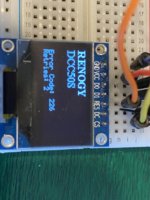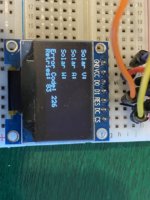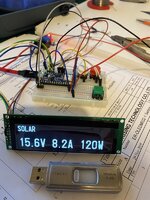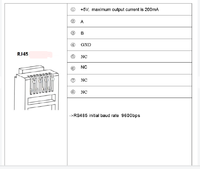There is currently no display available for this renogy B2B. So if anyone is interested, I've made one...........
The RS485 port is Modbus RTU and Renogy gave me a datasheet showing where all the data lives
Arduino boards have serial comms built in, and just need a RS485 module adding and then a OLED display (or Bluetooth if you want to see the data on a smartphone)
I'm using an arduino leonardo (clone) at the moment, but plan to swap to a nano.
Here's mine so far;


There's no data shown yet as it's not plugged in, but it does work. I've also got pages for Alternator status, fault codes, charging status. A pushbutton changes the page.
I plan to buy a larger OLED display and fit it in the overhead console where I have a blank panel currently, progress is a bit slow at the moment as I cant get the bits.
The cost of the arduino clone hardware is ridiculously low, like about £4 for a nano, £6 for the OLED display etc.
I can see that it may also be possible to hook this up to the Victron port in future, watch this space................
The RS485 port is Modbus RTU and Renogy gave me a datasheet showing where all the data lives
Arduino boards have serial comms built in, and just need a RS485 module adding and then a OLED display (or Bluetooth if you want to see the data on a smartphone)
I'm using an arduino leonardo (clone) at the moment, but plan to swap to a nano.
Here's mine so far;


There's no data shown yet as it's not plugged in, but it does work. I've also got pages for Alternator status, fault codes, charging status. A pushbutton changes the page.
I plan to buy a larger OLED display and fit it in the overhead console where I have a blank panel currently, progress is a bit slow at the moment as I cant get the bits.
The cost of the arduino clone hardware is ridiculously low, like about £4 for a nano, £6 for the OLED display etc.
I can see that it may also be possible to hook this up to the Victron port in future, watch this space................
Last edited:



